What is Data Migration and how to create the perfect process


A deep dive into How to successfully Migrate Data and some Tips from Professionals
Moving information from one page to another or even between documents has become a simple cut-and-paste activity. Though moving more significant amounts of data creates a more complicated situation. Moving large amounts of data or data transfer requires planning, and data migration specialists can develop strategic plans to take care of this.
Unfortunately, many companies underestimate what it actually takes to ensure a successful data migration. This only leads to spending more time and effort in the long run. Depending on the data migration project, there are many factors to consider. Gartner forecasted that by 2022, 90% of organisations would be using cloud services. In a Velostrata and Dimensional Research report, 73% of companies attempting cloud data migration said that their project took more than a year to complete. Over 60% commented that the project was harder than expected, and around 43% believed their data migration process would take over two years to complete.
In this article, we aim to shed light on the data migration process. We will provide answers to some important questions, such as what are some data migration strategies, and what are some of the best methods of moving information?
Data Migration Explained
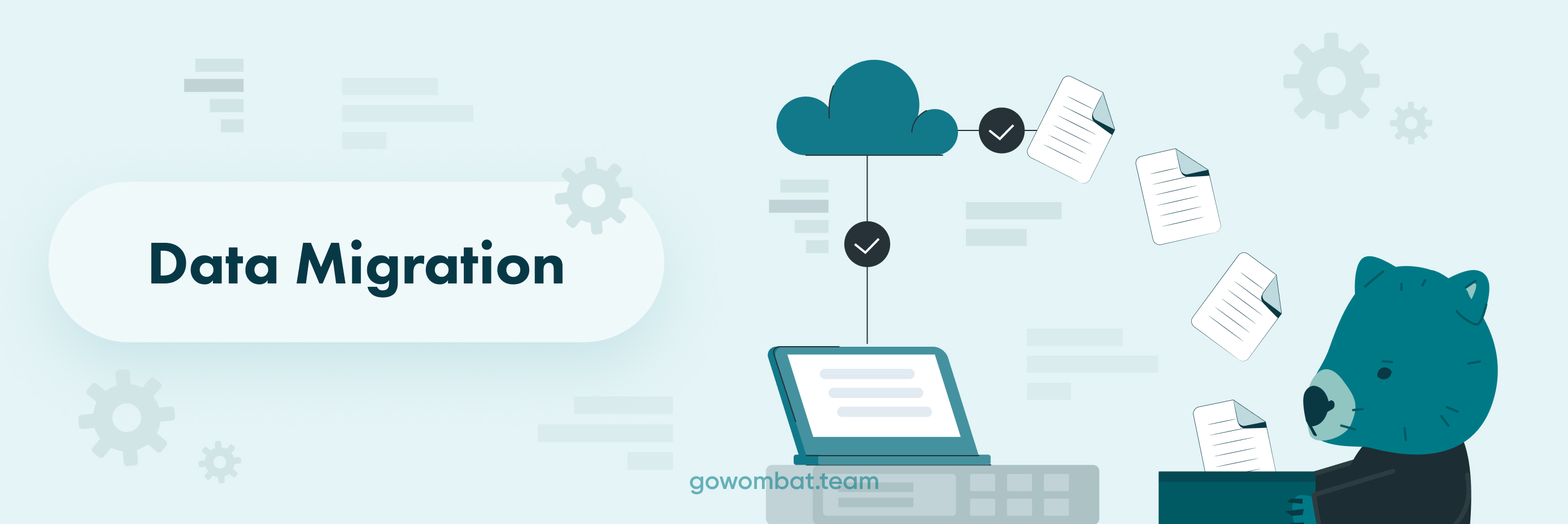
We know the process of transferring data from one data storage system to another as Data migration. This also refers to data migrations between data formats and applications.
We usually conduct data transfers as part of a data migration plan when introducing new systems or processes into an organisation. Data preparation, extraction, and transformation are also major aspects of the data migration process.
Main types of Data Migration
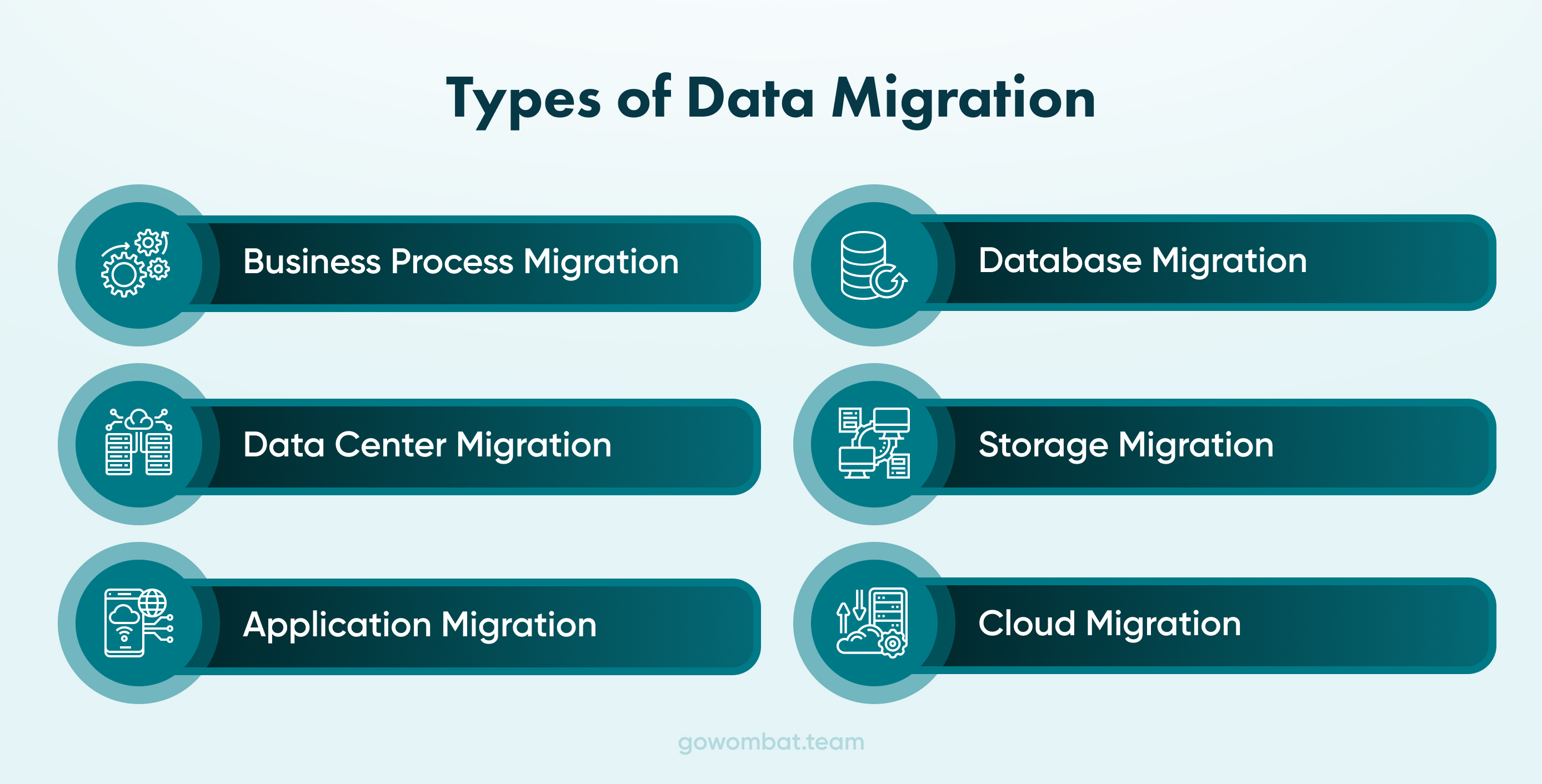
Storage Migration
We refer to migrating data from one storage location to another as storage migration. It means moving data from one physical medium to another. This section tends to refer to the physical moving of data from a more traditional form, such as paper to a digital form, cassette tape to hard drive, or HDD to cloud-based storage.
Often, the movement is not driven by physical space, but by the desire to modernise the system. Legacy systems are based on older technology and the entire process allows for the improvement of the data quality without altering the format.
Application Migration
Changing software or application vendor will often involve application migration. This will involve the movement of data from one environment to another. Using any new platform may require major alterations to the existing system to ensure the smooth transfer of data.
To overcome the difference in data formats or data models, as part of the data migration strategy and to protect data integrity, Application Programming Interfaces (APIs) are often integrated.
Data Center Migration
With an array of physical attributes, including computers, storage devices, servers, network routers, and switches, the data centre migration offers its own set of issues. Data centre migration can refer to the movement of old data centre infrastructure to a new physical location or the movement of data to a new infrastructure in the same location. As this data centre houses the entire sensitive data in a business, engineers need to pay attention to both the physical and digital aspects.
Database Migration
A database is a storage media structured in an organised manner. We manage databases through a system known as DBMS, Database Management Systems. A database migration process involves either moving data from an old version to a newer version or migrating to a different DBMS. As mentioned previously, when dealing with a database management system, there may be different data structures, making it tricky to ensure a smooth process.
Cloud Migration
With a majority of large corporations set to use a cloud computing environment for storage of some sort by the end of 2030, this is a method set to increase over the next decade. In fact, a recent report suggests that by 2025, there will be over 200 zettabytes of data stored in the cloud, 50% of which will be by large corporations. To put this in perspective, one zettabyte is a trillion gigabytes.
This specific process of migrating data refers to either moving data from an on-premises system to the cloud, or from one cloud provider system to another.
Business Process Migration
Business process and business applications migration require the movement of data relating to business processes to a new environment. Included with this are the metrics of the product, customer, and operational information. Business optimisation or reorganisation are often the instigators of business process migration. As with all migrations of data, attention to the GDPR rules regarding the safeguarding of personal data is required.
The Data Migration Process
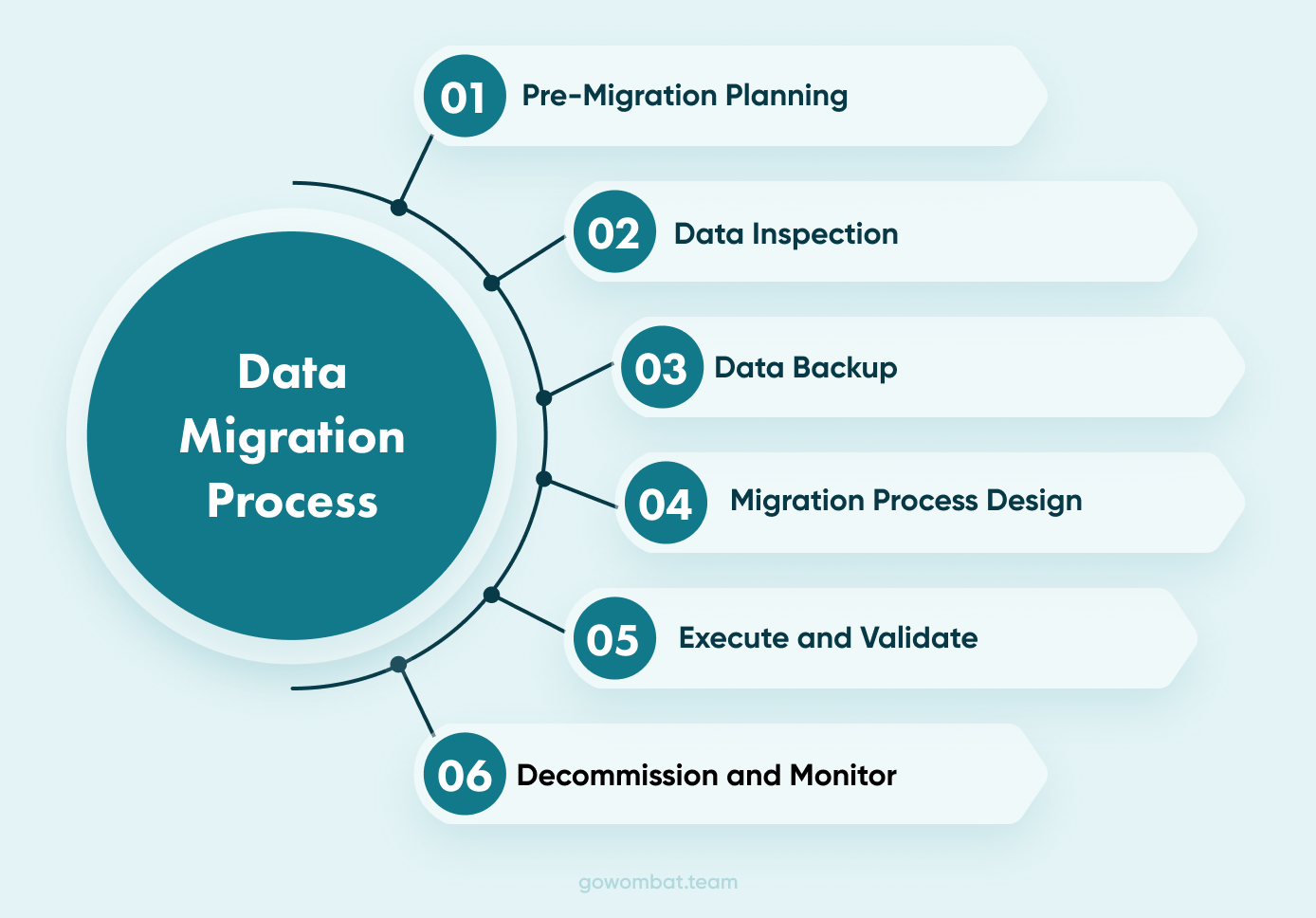
A well-planned data migration project will help to ensure a smooth and efficient process**.** The better the planning, the greater the chances of success and less chance of over-running the budget or allocated schedule. The data migration process can also follow the ETL process of data migration.
As data migration specialists, we can advise as to the best route for your project. Call us today for a chat.
The ETL approach can help manage the complex process of the data migration plan by processing huge datasets, profiling, and integrating multiple application platforms.
There are various types of data migration, and regardless of which is used, the process remains the same whether a project incorporates a big bang approach or a trickle data approach.
Big Bang Approach to Data Migration
A less costly and less complex method is the big bang data migration approach. Better implemented during downtime or public holidays, this process moves all data into one operation from the current environment to the target environment**.** Although it is faster and less complex, it is potentially more intrusive. As a result of the movement of all data, the process renders all systems unavailable.
The possibility of failure equals the advantages of this method on account of the amounts of data to be moved. Owing to this aspect, this method is more appropriate for smaller businesses.
Trickle Data Approach to Migration
Tackled in multiple phases, the trickle data migration approach breaks the data into smaller increments. This enables the old system to remain operational through a parallel process with the migration, with zero downtime for the systems.
Conversely, the trickle data migration approach is more complex and costly both in time and money. The longer iterative process is more suited to larger businesses with greater amounts of data to be transferred, and possibly less likely to sustain inconvenient downtime.
Pre-Migration Planning
The planning stage involves simultaneous data analysis of existing data sets and the suitability of the target system prior to transferring data. Here is where we need to make the big decisions about schedules, budgets, and the suitable method of data migration.
Data inspection
The quality of data to be migrated needs inspecting for any potential conflicts or issues. Data migration Software tools can help improve the data quality if any issues are discovered.
Data backup
As with any work with data migration, a backup of all data to be handled is essential. This is part of the disaster recovery strategy.
Migration Process Design
This point of the data migration process is where an ETL developer or data migration software process engineer takes charge. Besides the ETL developer, other specialists need to be included, such as the business analyst. The migration process stage stipulates the migration testing procedures, acceptance criteria, and other personnel responsibilities.
Execute and validate
This is where the ETL process kicks in and we can migrate data. The length of this process depends entirely on the project requirements, such as how much data and the method employed. To prevent any interruption to the live system, constant monitoring and validation are essential.
Data Migration Best Practices
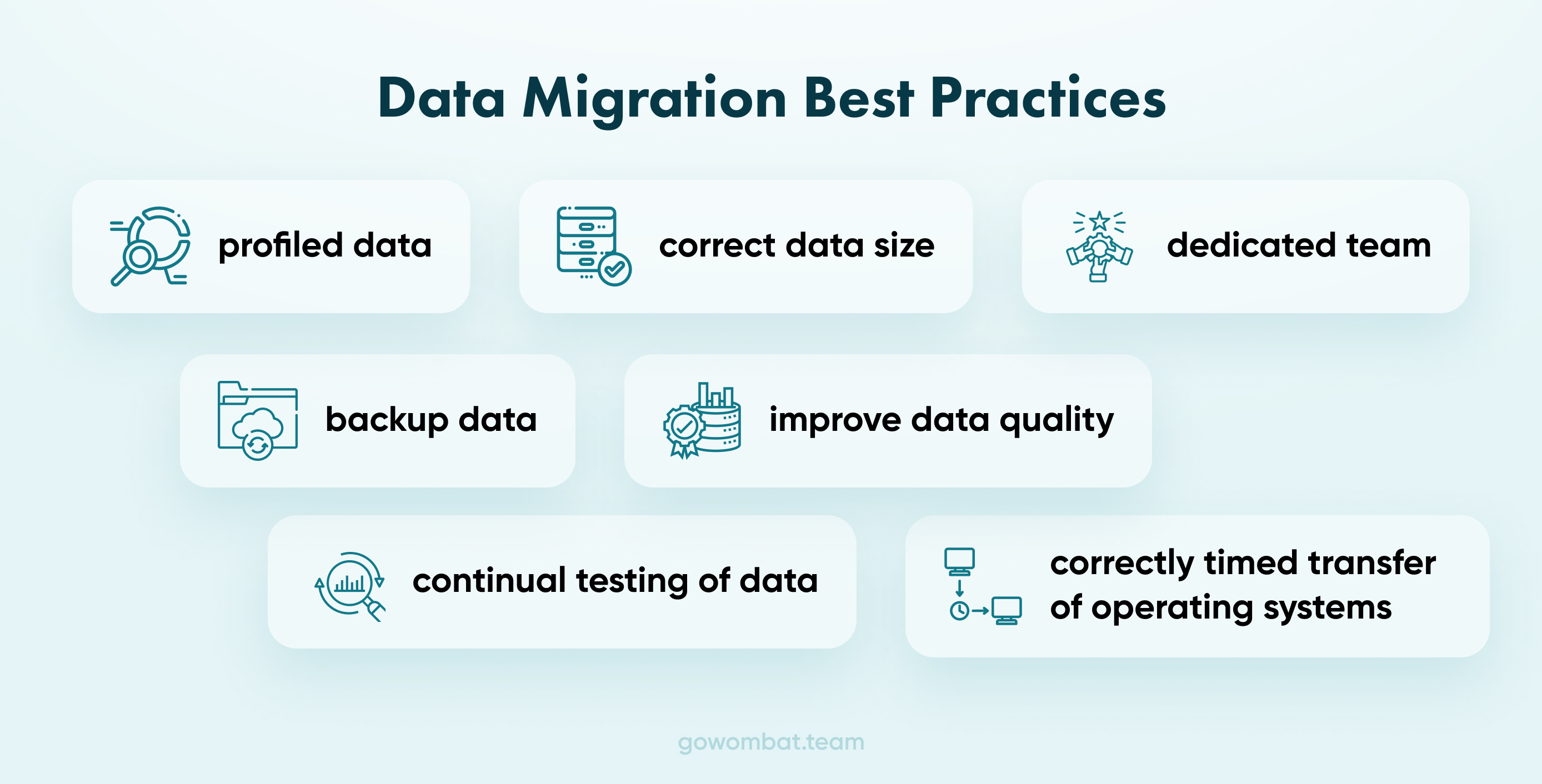
As professionals, we strive to follow best practice guidelines, and of course, there are some practices to help reduce costs in time, effort, and money that are essential.
It is suggested to establish a specifically dedicated migration team with specialists to control the project. The team can carry out all the duties required, like cleaning and improving the data contained in the source system and restricting the amount of data to be transferred. Prior to the migration process, specialists will profile and backup data before detailing any migrations scripts.
To find out how Go Wombat can demonstrate our best practices, call us.
Five Important Requirements of Data Migration Tool
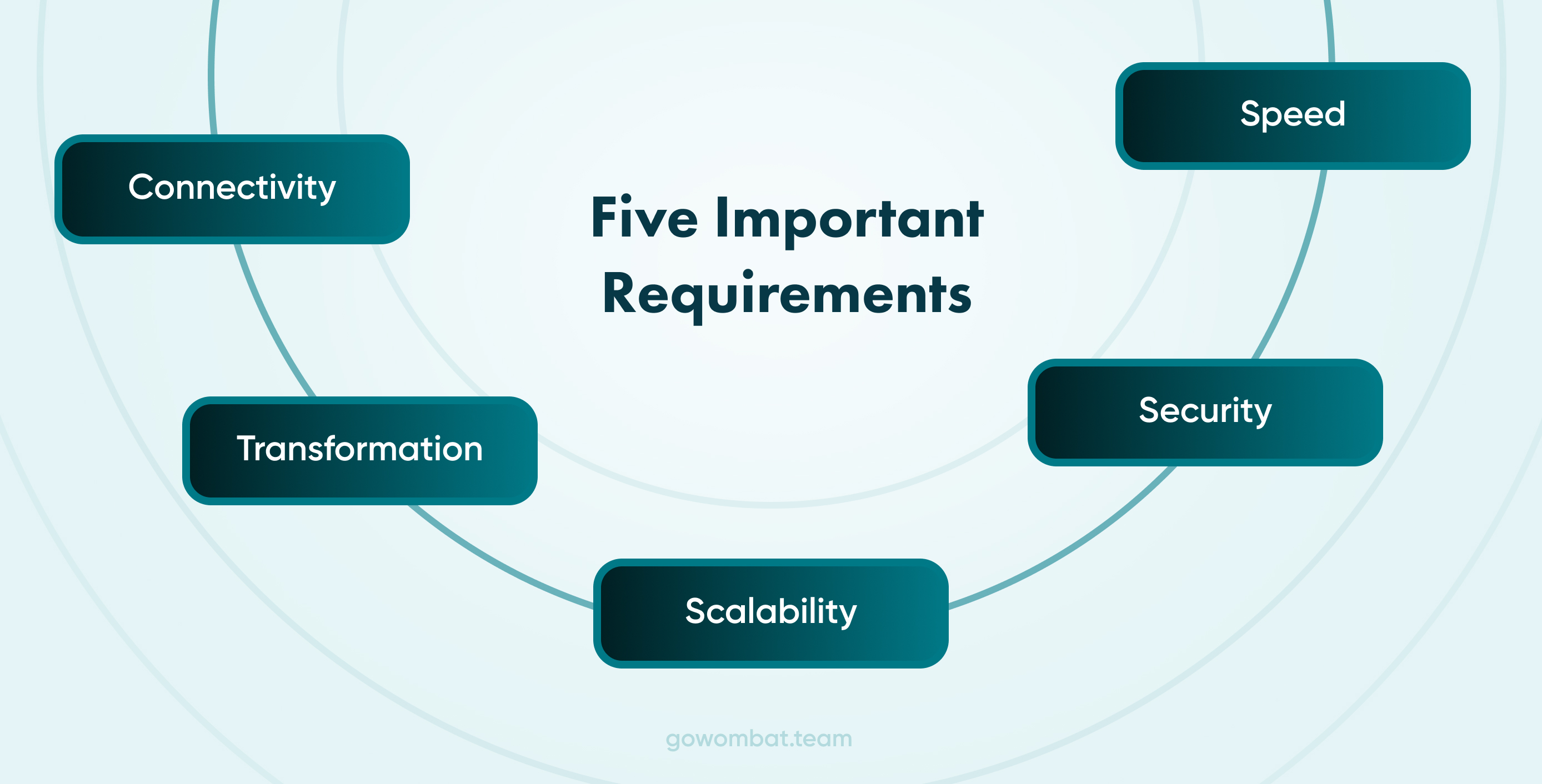
Creating migration tools from zero is incredibly complex and time-consuming. Luckily, there are data tools to help improve and simplify this. However, just like anything thing else, there are varying levels of quality and suitability. Here are five crucial capabilities to look for.
Connectivity
Are the tools future-proof to support your growing business needs and data management? Do these tools offer support for your current systems and software?
Transformation
You need to consider if the system can handle the migration of any data; structured, unstructured, or semi-structured.
Scalability
In view of expansion, can the system handle vast amounts of data? For example, can the system handle petabytes of data quickly and efficiently?
Security
A software platform’s security measures are acutely important. Your data is one of your most valuable resources and needs protection through cybersecurity measures.
Speed
The efficiency of the new platform will have a direct influence on the speed of data processing.
Data Migration Risks

Losing Data
Carrying out data backup and a migration process plan is essential to prevent data loss. Contracting software professionals with a full data migration strategy to care for the entire migration process will help eliminate or reduce the possibility of data loss.
Prolonged Migration Time
The time taken for data migration can depend on many factors. It could take a matter of months or even several years, depending on whether the process encounters issues and the severity of the issue. Identifying possible factors such as internet connections and transmission rates are issues a professional will know.
Data Security
As mentioned within the cybersecurity section, we should encrypt data before migration to ensure security.
Budget issues
A prolonged migration could have effects on many issues and software costs could easily grow to more than the project estimations. Every project faces this threat and software projects have a habit of proving to be more costly when not effectively planned.
Data Backup
Although technically not essential, a best practice of data migration is to create a full backup of the content you plan to move prior to the actual data migration. This will help create an extra layer of protection.
Migration Design
The migration design details the migration process and testing rules to be followed. It should clarify the criteria for acceptance and assign roles to team members.
The migration design stage can take from a few weeks to months, depending on the time required to write ETL procedure scripts. If all software is in place and only customisation is needed, then the time required will be reduced accordingly.
Execution
This is when all the magic takes place and the migration of data occurs. Depending on the method used, such as the big bang, it will require only a couple of days. With trickle data migration and zero downtime, could take several months.
Phased data migration should be scheduled and planned to create as little disruption to the live system as possible. Full communications are required between business areas or departments to refine and clarify details of data and procedures.
Data Migration Quality Testing
In fact, testing is not a separate phase, as it is performed across the design, execution, and post-migration phases. If you have taken a trickle approach, it is important to test each portion of migrated data to fix problems in a timely manner. The QA process is an integral aspect of all software development and data migration. The continual process of testing helps ensure the quality of the data being transferred.
Before launching migrated data into production, we should validate results with key business users through a full audit.
Unlock Success with Premium Software Development
Contact us


Conclusion
We have looked at the question "What is data migration?" and explored the various aspects and details of the process involved. We have looked at some data migration tools to smooth the processes, along with some of their requirements. Regardless of the purpose, such as database migration or storage migration, the correct environment needs to remain a priority when data mapping.
There are always risks involved when moving data depending on the data storage infrastructure and the method employed. However, we recommend using due diligence and searching for the best software developers for your data migration project.
Go Wombat is experienced with data migration tools and has dedicated teams to suit many projects. Call us today.
How can we help you ?






